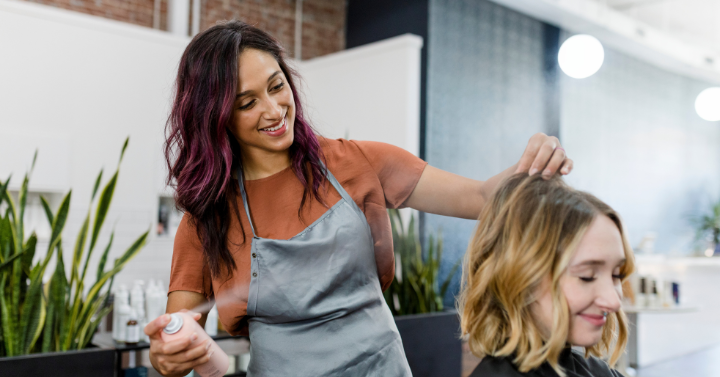The professional hair care industry has been undergoing a major shift in product sales. Over the last few years, even traditionally conservative players have begun selling their products to consumers through both online and offline retail channels.
Intense competition from alternative channels, coupled with limited consumer spending and longer intervals between salon visits, continues to adversely impact the number of salons globally. In 2023, the number of salons declined by more than 2% globally, and the number of stylists witnessed an even steeper decline of 4%. However, the number of independent stylists remained relatively flat. In fact, in Europe and North America, it continued to increase, in contrast to the number of salons.
Salons and stylists remain the backbone of the professional hair care industry. To better connect with and support them in their daily business, consider these top three tips:
- Be present where they shop: Salons and stylists have different purchase patterns in many ways. One key distinction is where they make most of their purchases. According to Kline + Company’s recent survey, salons in the United States primarily purchase products from manufacturers directly, as well as from distributors and wholesalers. This is not at all the case for independent stylists, where manufacturers account for only 8% of their purchases. Learning where purchases are made can empower you to better address your target audience.
- Address mobility: Independent stylists are often on the go, usually working in 2–3 locations on average, finds Kline + Company’s survey. Therefore, one of the key challenges they face is keeping product stocks. Independent stylists tend to “stop by” their nearest beauty supply store as they visit their clients. Apps that help them manage logistics and stocks can be an effective solution to address the needs of independent stylists’ business practices and their constant mobility.
- Help them retail better: Due to strong competition from other channels, sales done through salons and stylists are on the decline. This could be a lucrative part of their business, but only 57% of the salons surveyed in the United States claim that they retail products on a regular basis. The main reasons why salons often avoid retailing products are that they view it as outside their core services and customers believe that they can find these products cheaper elsewhere. To overcome these barriers, consider offering exclusive in-salon-only deals and providing enhanced education for stylists on retailing products.
Knowledge of the purchase patterns of both salons and stylists is critical for successful collaboration with them. In 2024 Kline + Company, for the first time, combines its two insightful survey-based studies to provide critical information comparable across channels on where, how, how often, and why salons and independent stylists shop for professional hair care products. To learn more about their purchase patterns, refer to Kline + Company’s new Salon and Stylists Purchase Channels survey across key markets, including France, Germany, Italy, Spain, United Kingdom, and United States.
Want beauty and wellbeing industry updates, expert analysis, insider tips, and webinar invites in your inbox? Click here to sign up for the Kline newsletter.

